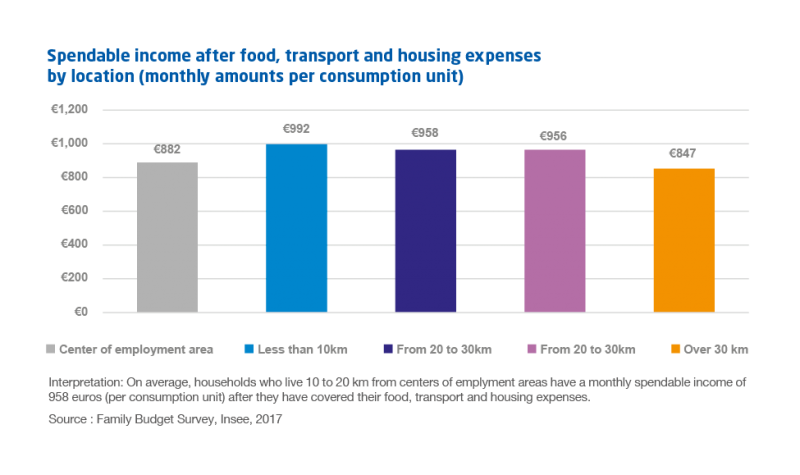
For a given household, the global impact of inflation essentially depends on the share of the budget allocated to the various goods and services. Following a note[1] that focused on data from 2017, the purpose of this paper is to estimate, for different types of household, the rise of food, transport and housing costs, assuming there is no change in consumption volumes since 2017. Therefore, we deliberately overlook that, confronted with a price increase of a good or service, households tend, when possible, to reduce the volume they buy.
The price increase of the FTH basket is slightly more substantial for the middle classes than for other households and accelerate significantly with age. However, the consequences of this increase are much more severe for poor households. For the poorest 10%, the price of the FTH basket has risen by just under 14%, but this increase represents 13% of their income. For the richest 10%, the increase is estimated at 16%, but this corresponds to less than 5% of their income. As a reference, at the macro level, from 2017 to 2022, consumer prices rose by 10% and gross disposable income per consumption unit have gone up by 15% in current euros.
The price of the FTH basket rises more as distance from centers of employment areas grows, and therefore as the proportion of fossil fuels in the household budget increases. However, the spatial variations tend to disappear when the increase in the basket cost is expressed as a percentage of household income. Finally, it is for the middle class, rural households, house owners and the elderly that the cost of food, transport and housing increases the most. Yet when this increase is expressed as a percentage of their respective income (at its 2017 level), the burden of inflation appears to be heavier for poorer households.
This paper includes a data vizualiation which illustrates the evolution of each spending taking into account households characteristics and their geographical situation.

[1] Cusset P.-Y. et Trannoy A. (2023), « Spatial variation of purchasing power in France », Analysis paper, n° 118, february.







